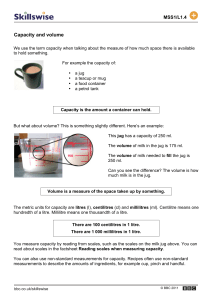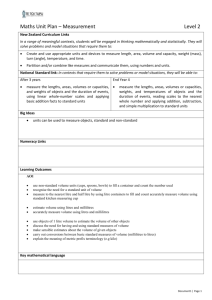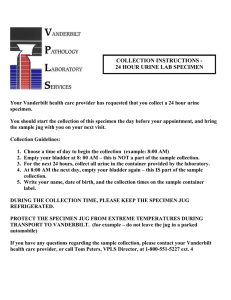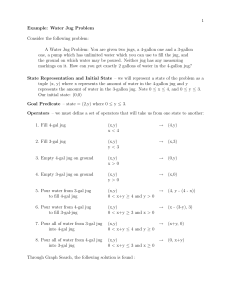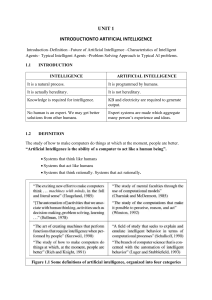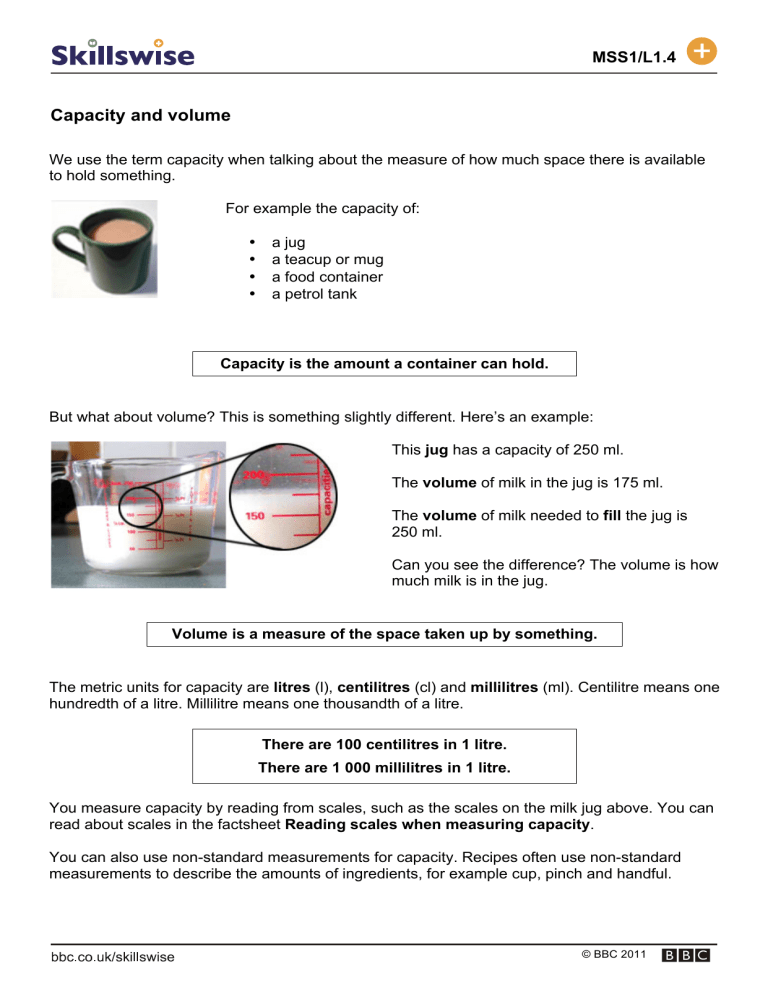
MSS1/L1.4 Capacity and volume We use the term capacity when talking about the measure of how much space there is available to hold something. For example the capacity of: • • • • a jug a teacup or mug a food container a petrol tank Capacity is the amount a container can hold. But what about volume? This is something slightly different. Here’s an example: This jug has a capacity of 250 ml. The volume of milk in the jug is 175 ml. The volume of milk needed to fill the jug is 250 ml. Can you see the difference? The volume is how much milk is in the jug. Volume is a measure of the space taken up by something. The metric units for capacity are litres (l), centilitres (cl) and millilitres (ml). Centilitre means one hundredth of a litre. Millilitre means one thousandth of a litre. There are 100 centilitres in 1 litre. There are 1 000 millilitres in 1 litre. You measure capacity by reading from scales, such as the scales on the milk jug above. You can read about scales in the factsheet Reading scales when measuring capacity. You can also use non-standard measurements for capacity. Recipes often use non-standard measurements to describe the amounts of ingredients, for example cup, pinch and handful. © BBC 2011
